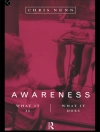A scientific take on the still-central therapeutic concept of “the unconscious.”
More than one hundred years after Freud began publishing some of his seminal theories, the concept of the unconscious still occupies a central position in many theoretical frameworks and clinical approaches. When trying to understand clients’ internal and interpersonal struggles it is almost inconceivable not to look for unconscious motivation, conflicts, and relational patterns. Clinicians also consider it a breakthrough to recognize how our own unconscious patterns have interacted with those of our clients.Although clinicians use concepts such as the unconscious and dissociation, in actuality many do not take into account the newly emerging neuropsychological attributes of nonconscious processes. As a result, assumptions and lack of clarity overtake information that can become central in our clinical work.
This revolutionary book presents a new model of the unconscious, one that is continuing to emerge from the integration of neuropsychological research with clinical experience.
Drawing from clinical observations of specific therapeutic cases, affect theory, research into cognitive neuroscience and neuropsychological findings, the book presents an expanded picture of nonconscious processes. The model moves from a focus on dissociated affects, behaviors, memories, and the fantasies that are unconsciously created, to viewing unconscious as giving expression to whole patterns of feeling, thinking and behaving, patterns that are so integrated and entrenched as to make them our personality traits.
Topics covered include: the centrality of subcortical regions, automaticity, repetition, and biased memory systems; role of the amygdala and its sensitivity to fears in shaping and coloring unconscious self-systems; self-narratives; therapeutic enactments; therapeutic resistance; defensive systems and narcissism; therapeutic approaches designed to utilize some of the new understandings regarding unconscious processes and their interaction with higher level conscious ones embedded in the prefrontal cortex.
عن المؤلف
Allan Schore, Ph D, is on the clinical faculty of the Department of Psychiatry and Biobehavioral Sciences, UCLA David Geffen School of Medicine, and at the UCLA Center for Culture, Brain, and Development. He is the recipient of the American Psychological Association Division 56: Trauma Psychology ‘Award for Outstanding Contributions to Practice in Trauma Psychology’ and APA’s Division 39: Psychoanalysis ‘Scientific Award in Recognition of Outstanding Contributions to Research, Theory and Practice of Neuroscience and Psychoanalysis.’He is also an honorary member of the American Psychoanalytic Association. He is author of three seminal volumes, Affect Regulation and the Origin of the Self, Affect Dysregulation and Disorders of the Self and Affect Regulation and the Repair of the Self, as well as numerous articles and chapters. His Regulation Theory, grounded in developmental neuroscience and developmental psychoanalysis, focuses on the origin, psychopathogenesis, and psychotherapeutic treatment of the early forming subjective implicit self. His contributions appear in multiple disciplines, including developmental neuroscience, psychiatry, psychoanalysis, developmental psychology, attachment theory, trauma studies, behavioral biology, clinical psychology, and clinical social work. His groundbreaking integration of neuroscience with attachment theory has lead to his description as ‘the American Bowlby’ and with psychoanalysis as ‘the world’s leading expert in neuropsychoanalysis.’ His books have been translated into several languages, including Italian, French, German, and Turkish.












